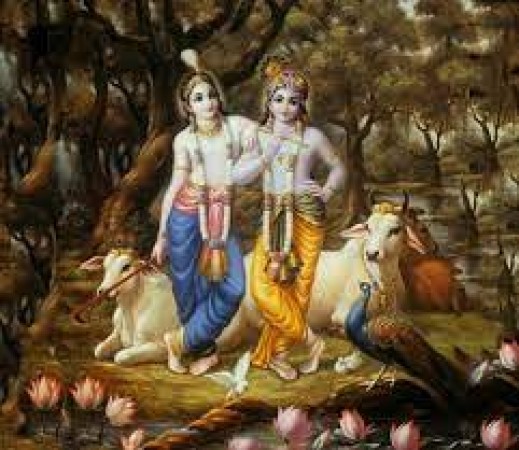
Balarama, also known as Balaram or Balabhadra, is a prominent figure in Hindu mythology and an essential part of the epic narratives centered around Lord Krishna. He is revered as the elder brother and constant companion of Lord Krishna, symbolizing strength, loyalty, and unwavering support. Balarama's life and character have left a lasting impact on Hindu culture and spirituality. Balarama, the elder brother and constant companion of Lord Krishna, holds a revered place in Hindu mythology and spirituality. His unwavering support, strength, and loyalty to Lord Krishna make him an iconic figure in Hindu culture. Balarama's life and character offer valuable lessons on the significance of brotherly love, virtuous living, and devotion to the divine. As an eternal symbol of support and protection, Balarama continues to inspire devotees on their spiritual journey and remains an essential part of the rich tapestry of Hindu mythology.
Balarama was born to King Vasudeva and Queen Rohini in the Yadava dynasty, in the city of Mathura. He is an avatar of Lord Vishnu's divine serpent, Adishesha, who serves as the cosmic serpent upon which Lord Vishnu rests in his form as Lord Narayana. Balarama's birth is celebrated during the festival of Balarama Jayanti or Balarama Purnima. Balarama is best known as the elder brother and ardent supporter of Lord Krishna, the eighth avatar of Lord Vishnu. The bond between Balarama and Krishna is a beautiful portrayal of brotherly love, friendship, and devotion. Together, they form the divine duo, with Krishna being the embodiment of divine love and Balarama representing strength and protection. Balarama played a crucial role in the life of Lord Krishna, accompanying him on various adventures and exploits during their childhood and youth. They grew up together in Vrindavan, where they engaged in playful activities with the cowherd boys and gopis (cowherd maidens). One of the most famous incidents involving Balarama was the killing of the demon Pralambasura, who took the form of a cowherd boy to deceive Krishna and Balarama. Balarama exhibited his strength by defeating and slaying the demon.
Balarama's role in the Mahabharata, one of the greatest Indian epics, is significant. During the Kurukshetra War, Balarama decided not to participate directly in the battle due to his close relations with both the Pandavas and Kauravas. However, he played a crucial advisory role, guiding the warriors and ensuring that righteousness was upheld.Balarama's earthly journey came to an end during a pilgrimage to the sacred Tirtha of Prabhasa. There, he entered the waters of the Saraswati River and transcended to the divine realm. After his departure, Balarama returned to his original form as the divine serpent Adishesha, rejoined Lord Vishnu, and rested on Lord Vishnu's serpent couch in Vaikuntha, the heavenly abode of Lord Vishnu. Balarama's character holds profound symbolism and spiritual significance. He embodies the qualities of strength, loyalty, and protection, serving as an exemplar of virtuous living and adherence to dharma (righteous duty). Balarama's association with the cosmic serpent Adishesha represents his eternal and unchanging nature. He is the support and foundation of Lord Krishna, just as Adishesha supports Lord Vishnu. In this sense, Balarama represents the eternal support and protection provided by the divine in the universe.
Also read-Vasuki: The Serpent King in Hindu Mythology
Sheeshnag: The Serpent of Infinite Endurance
Kailash Mansarovar: A Historic, Cultural, and Religious Gem Lost in Indo-China War